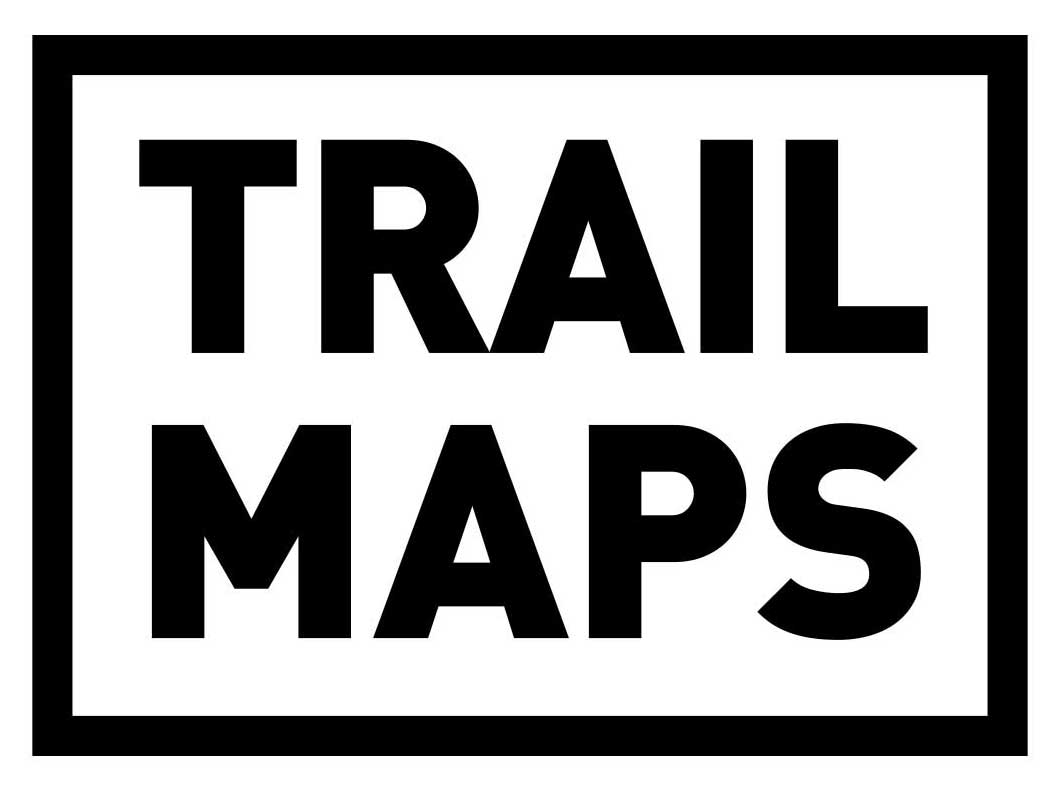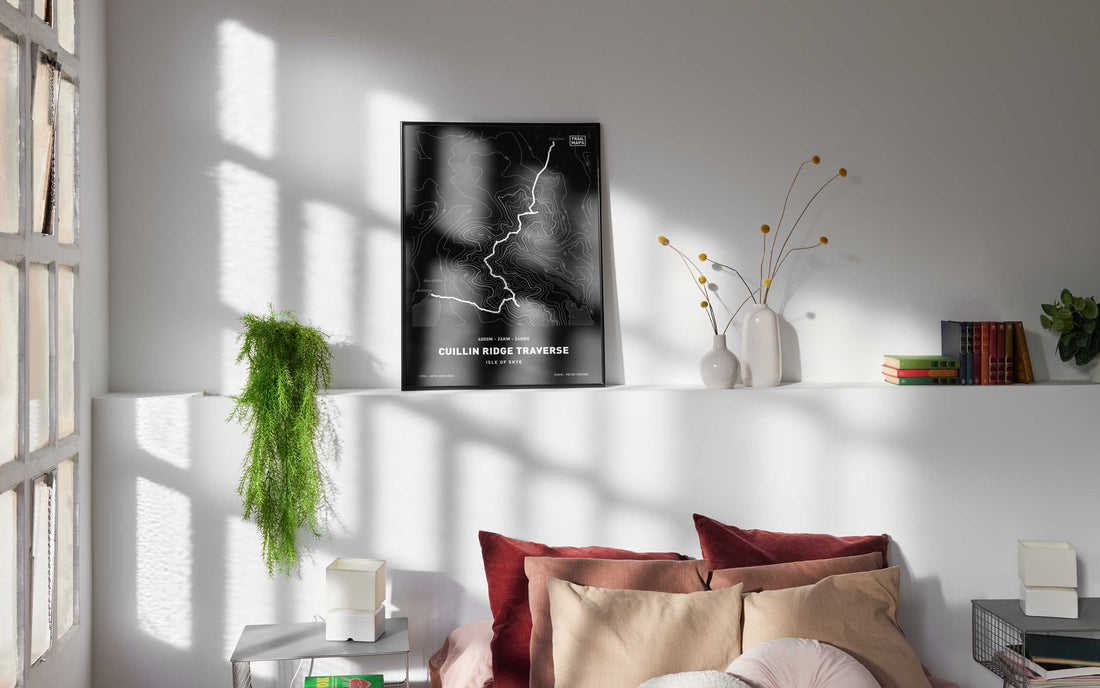We caught up with Pete Coombs, Co-Founder of Backdrop Journal, to hear about his journey on the Cuillin Ridge. He used our "Design Your Own Trail Map" feature to capture the essence of his expedition and preserve the memories for years to come. And it's no wonder - the trek on the Cuillin Ridge was a truly epic experience for both Pete and his wife.
For many people, a love of hiking and trekking begins at a young age. For my wife, it all started with a book she was given when she was just 12 years old. It was a collection of great hikes in the UK, and it was the Cuillin Ridge that captured her imagination, inspiring a lifelong dream to hike the UK's most alpine ridge.

Fast forward many years later, and after being beaten by the weather twice, we found ourselves standing in the Glen Brittle car park, ready to tackle the ridge. The Cuillin Ridge is not the longest of hikes, but it is the most continuously exposed ridgeline in the UK, and the weather is always a challenge. Too wet and windy, and you will be defeated by the elements. Too hot, and you won't be able to carry enough water, making dehydration a risk.
We had been up on the ridge the day before, depositing food, water, and bivy equipment for an overnight stay. This was to keep the weight of our bags down and to ensure we had everything we needed for our expedition. There was a damp mist in the air, a common occurrence on the west coast of Scotland, but the forecast promised clear skies and dry weather for the next 36 hours.

With high spirits, we set off, putting one foot in front of the other, gradually making our way up the ridge. Gaining the ridge is a simple, but long hike that eventually becomes steeper and turns into an easy scramble. Even traversing the ridge is not overly challenging, but it does require a head for heights and sure-footedness that would test even the most experienced tightrope walker.
The real challenge, even with good weather and proper preparation, is the mental aspect of the hike. You are exposed on the ridge, and any fall could have serious consequences, possibly even death. Most of the time, you are surrounded by sheer drops on at least one side, often without any handholds. This goes on for the entire hike. It took us 12 hours of short roping and hiking to reach our overnight spot. While my body was fine, my brain was exhausted from the constant concentration required to traverse the exposed areas. The security of being roped together was a comfort, as we looped the rope around rocks and used climbing protection when necessary. Short roping can be slow, but it allowed us to hike the exposed areas without rope, using all our concentration.

We ate a hot rehydrated meal, refilled our water bottles, watched a stunning sunset, and went to bed early, setting our alarms for 3:00 am. We woke up to a clear sky and started our hike as soon as we finished our hot drinks and porridge. It was due to rain in the late afternoon, so an early start was essential, as wet rock can make the hike even more challenging.

Roped together, we quickly climbed the inaccessible pinnacle and abseiled off its summit, making our way towards Sgurr nan Gillean and Sgurr A'Bhasteir, which are at the end of the ridge. With the sun still in the sky, I was confident we could complete the hike, but I didn't know that we still had the most technical part of the ridge ahead of us. This turned out to be my favourite part of the hike, and as the rain clouds started to build, we were soon on our way off the ridge and towards the legendary Sligahand Hotel.
It had taken us 24 hours of actual hiking, less hours than I’d like sleeping, and two previous attempts, but as we supped a locally brewed pint under a now rain filled sky, we’d completed my wife’s childhood dream!
Pete Coombs is Co-Founder of Backdrop Journal, a backcountry splitboarding website and podcast.

